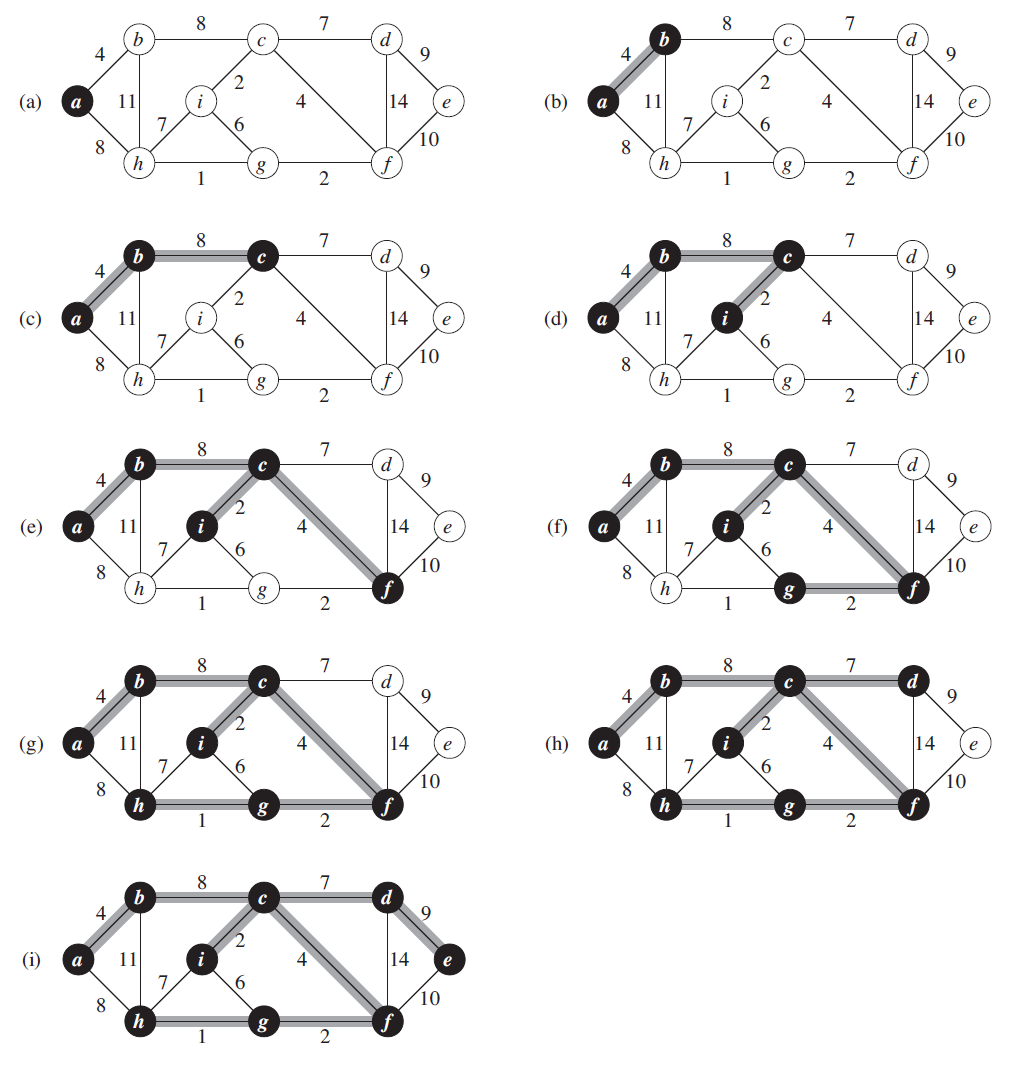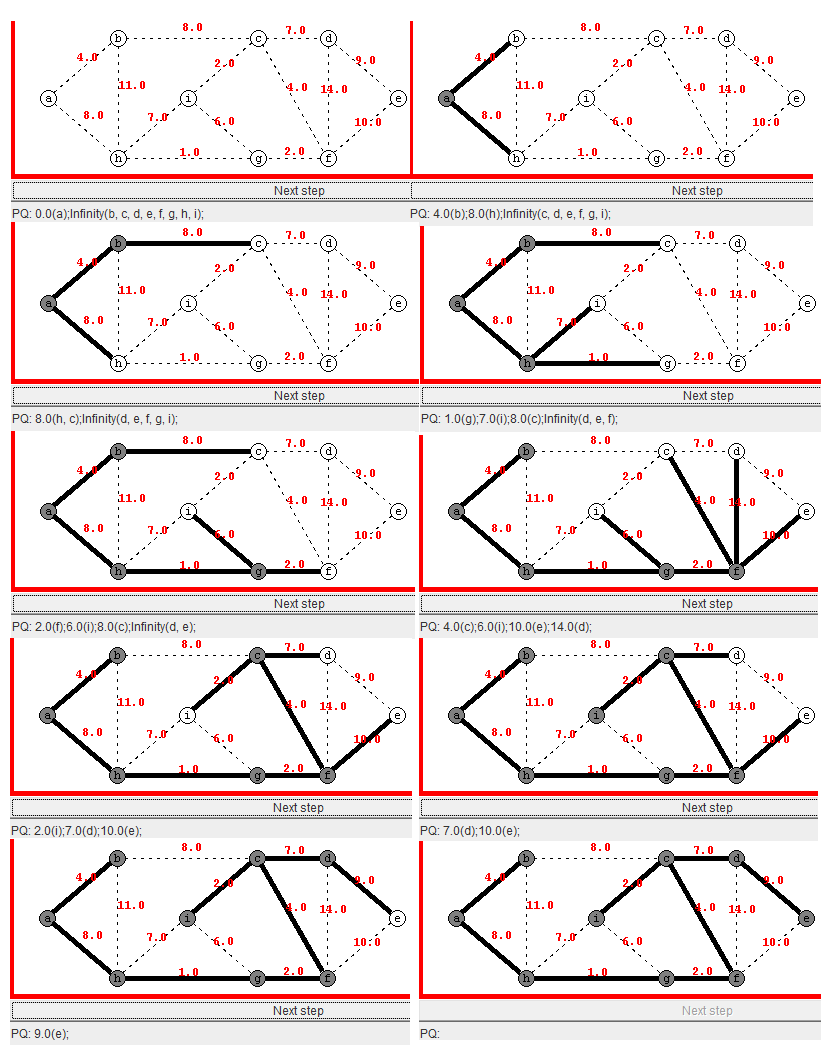The algorithm is as follows:
MST-PRIM(G,w,r)
1 for each u ∈ G.V //initialization
2 u.key = ∞
3 u.π = NIL
4 r.key = 0
5 Q = G.V //end initialization
6 while Q ≠ ∅
7 u = EXTRACT-MIN(Q)
8 for each v ∈ G.Adj[u]
9 if v ∈ Q and w(u,v) < v.key
10 v.π = u
11 v.key = w(u,v)
- All vertices that are not in the tree reside in a min-priority queue
Qbased on akeyattribute. v.keyis the minimum weight of any edge connectingvto a vertex in the treev.πpoints to the parent ofvin the treeGis a graph,wis a weight function,ris a root
The example given is as follows:
I am confused, why in step (c), edge $(b,c)$ is added instead of edge $(a,h)$. Below the diagram, there is a note saying:
In second step, the algorithm has a choice of adding either edge $(b,c)$ or edge $(a,h)$ to the tree since both are light edges crossing the cut.
However still I think that according to the line 8 in algorithm, all adjacent vertices of $a$ not in the tree must be added first to the tree. Thus $h$ should also get added immediately after $b$, before $c$.
The line 8 says for **each v** ∈ G.Adj[u](i.e. for each adjacent vertex $v$ of $u$), why only adjacent node $b$ of $a$ is considered, but not $h$ (which is also adjacent to $a$).
If what author says should occur, then there should be something like break construct on line 12 inside the if construct's body, which will result in exiting for loop and hence grabbing next u = EXTRACT-MIN(Q).
Am I correct? or I must be missing something very stupid. What's that?


